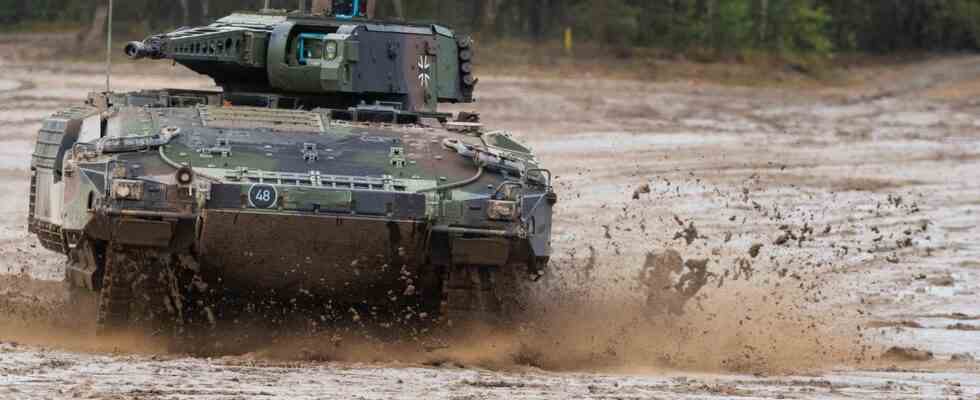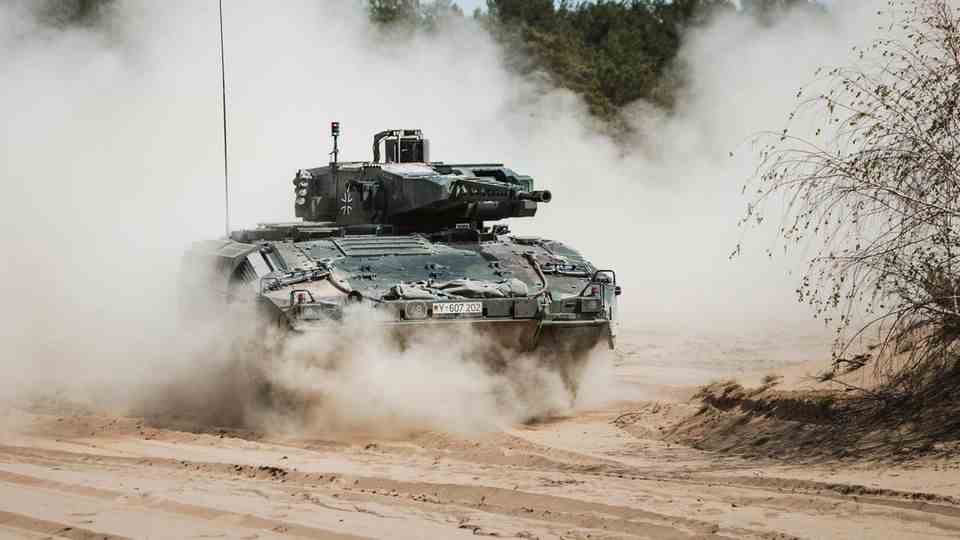opinion
Puma glitch
Only minor damage to the Puma infantry fighting vehicle? In an emergency, the crew would be dead
The puma should have comprehensive capabilities – maybe you wanted too much at once.
© Philipp Schulze/ / Picture Alliance
18 Pumas failed during an exercise. Now we are talking about operating errors and minor damage, which can be repaired as soon as possible. But in war, even a minor breakdown is no small matter.
During an exercise in December, 18 Puma armored personnel carriers failed. The successor to the aged Marder is considered the most modern armored personnel carrier (IFV Infantry Fighting Vehicle) in the world. But also as the most expensive and – to put it mildly – as the most demanding of its kind. Breakdowns and delays have accompanied the Puma since its birth in 2015, prices are going up and the range of services is going down. But 18 in one fell swoop – that was too much. Secretary of Defense Lambrecht has questioned the whole project. And of course an attempt is now being made to pass the buck on. The armaments industry by no means wants to write off the prestige project. So the total failure is downplayed and the blame is sought from others.
Failure without enemy action
These attempts only add to the disaster. First, the damage is downplayed. Actually, nothing happened at all, it was “minor damage” that could be repaired shortly, they say. Imagine a statement like this in a world other than that of the procurement bureaucracy: rows of comparatively new cars are left lying around and the manufacturer writes to the customers not to get upset, after all the engine did not explode, there was only minor minor damage to the control unit and alternator, one is confident that it will be repaired in a few weeks. Does the comparison work? Yes, a car is not built for war. If he stays on the hard shoulder, you don’t have to expect that he will be shot at by other vehicles. When an infantry fighting vehicle is deployed, there is no minor damage, if it breaks down in combat, its fate is sealed.
Just a small cable fire
And these trifles should not be the fault of the armament technology, but of incorrect operation and rough treatment. You can translate that: The soldiers are to blame. Among other things, it is complained that the cable fire in a vehicle was fought with the powder extinguisher, which caused more damage than necessary. Strictly speaking, that may even be true. It is quite possible that the fire was still in a state in which it could have been stopped by cutting off the power supply. But a lot of caution is required when it suddenly starts to smolder in the confined combat space of the tank. Apart from the fact that a cable fire is anything but minor damage.
Rotation system puts a strain on the technology
In addition, the rough treatment of the Puma by the Bundeswehr is criticized. The stress in the actual exercise was not excessive, but everyday life in the Bundeswehr probably was. This alludes to the following practice. In order to save money, the Bundeswehr has more soldiers than equipment. Equipment is then passed around, allowing each unit to occasionally “play war” fully equipped.
This is difficult for the taxpayer to understand. To put it bluntly: three battalions are on the payroll, but the tanks are only for one. If war breaks out, you could only use one battalion, but you always pay for three. This austerity program, which could also have come from the GDR planned economy, has another nasty side effect. In the past, an IVF, a main battle tank and every large piece of equipment had a permanent crew. She and especially the driver made sure that her “Leo” was treated well. Minor and sometimes major damage was repaired in-house. Partly on the way of barter and favor economy, of which nobody was officially allowed to know anything.
The leadership of the Bundeswehr has put an end to the personal responsibility of the crews. The own vehicle was replaced by a rotation system, as known from rental cars in the civilian sector. The result: the technology is treated far more harshly than before. And it is no longer “unofficially” cared for, cherished and repaired. As might be expected, the state of the art has deteriorated since then. One can criticize these principles of the Bundeswehr, but they describe the operational environment of the device. If the Puma can’t take that, it probably isn’t the right choice for such a rough customer.
Complex and more complex
Defenders of the Puma argue that the infantry fighting vehicle has capabilities that others could only dream of. That is correct if the skills could be called up in the harsh reality. However, it was precisely these outstanding skills that led to the project being overly complex and the interaction of the subsystems not working reliably. In 2015, the Puma was touted as the infantry fighting vehicle of the future. The project has been in the works for the buyer for eight years now, and with a bit of luck, the noble device should really be ready for use at the front around 2030. So at a time when the “future” that was spoken of in 2015 is already far in the past. And here comes the next problem. The Pumas were brought to the most modern configuration status S1 for the rapid task force. In other words, the infantry fighting vehicle of the future must already be comprehensively modernized in order to be able to survive in the present. The modernization pushes add to the over-complexity of the basic design.
The failure of the Puma reinforces the suspicion that the Bundeswehr has acquired “Make a wish” systems for peacetime operations. The Panzerhaubitze 2000 delivered to the Ukraine are said to cope only poorly with the rigors of war, hardly half are said to be operational (Panzerhaubitze 2000 – Kyiv gets one of the most modern and dangerous artillery systems in the world). Berlin does not deliver armored personnel carriers to Kyiv. Luckily, one has to say, because one thing is clear: if these 18 super-modern Pumas had rolled into action in the Donbass, the Russians would have completely wiped them out.
Sources: soldier and technology, Handelsblatt






